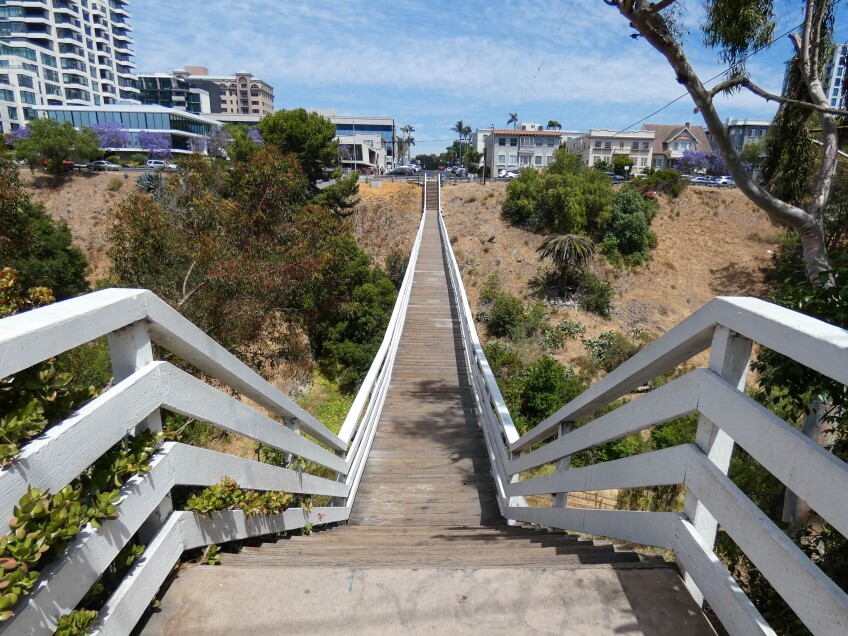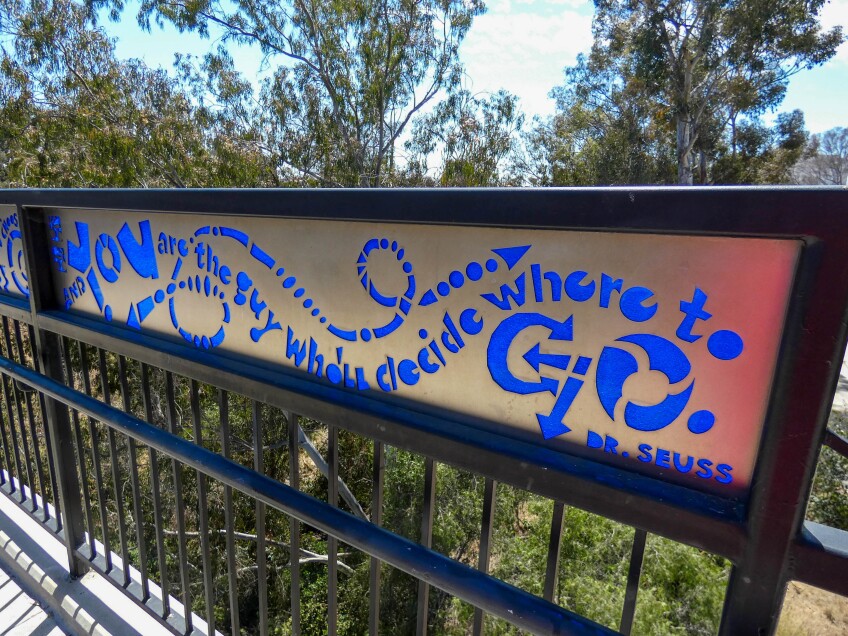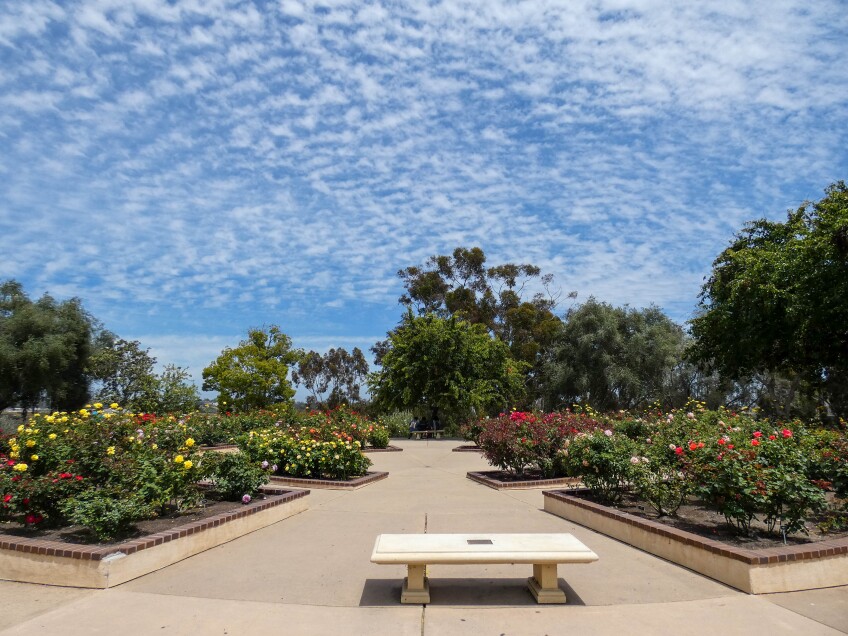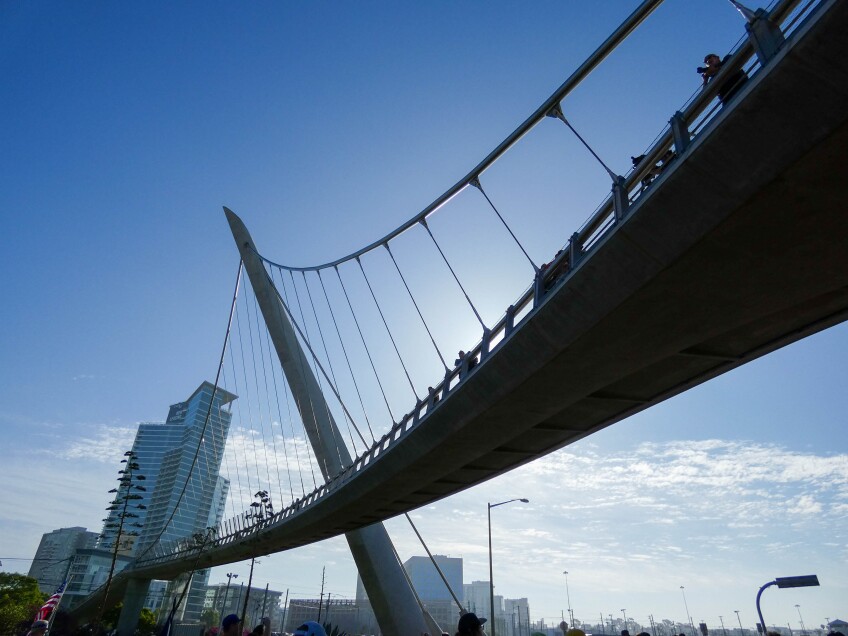Where to Find San Diego's Scenic and Historic Pedestrian Bridges

You could drive across one of Southern California's magnificent bridges — but sometimes, you want to get out of your car and away from traffic.
And there are plenty of spectacular spans you can make on foot — especially in San Diego, where one of its most popular urban hikes incorporates as many scenic bridge crossings as possible.
So, leave your car at home or on the street — and embark on these "secret" passageways between fascinating and historic neighborhoods, across thickly vegetated canyons and safely above multiple lanes of traffic whizzing below.
1. Spruce Street Suspension Footbridge, Bankers Hill

Crossing the Spruce Street Suspension Bridge in San Diego's Bankers Hill neighborhood, someone might decide it would be funny to make it swing back and forth. But don't worry — even as they're "rocking the boat," so to speak, it only feels unstable.
It was designed by former San Diego City Engineer and two-time Mayor Edwin Capps for passengers to be able to cross Arroyo Canyon (sometimes called Kate Sessions Canyon) to get to one of the trolley lines on Fourth or Fifth Avenue. According to "The San Diego Union-Tribune," it should be strong enough to hold 2,186 people weighing 150 pounds each! Rising 70 feet above the canyon floor, it still stands strong today.
Besides, bridges like these were built to move. In fact, this 110-year-old footbridge is popular for its notorious "wiggle" (or the natural sway of the suspension) — and its nicknames have included the "Swinging Bridge" and the "Wiggly Bridge." So, just sway with the bridge as you walk from east to west or west to east along Spruce Street, 375 feet of which is a steel cable bridge between Brant Street and Front Street.
Free parking on residential streets on either side of the bridge. Please be courteous of neighbors. Open 6 a.m. to 10 p.m. daily. Dogs are welcome. Smoking, alcohol consumption and glass containers are all prohibited. Please don't dump trash into the ravine below.
2. Quince Street Bridge, Bankers Hill

One canyon to the east of the Spruce Street bridge is the Quince Street Bridge, which traverses Maple Canyon between Third and Fourth Avenues. Although this one is only 60 feet high and 236 feet long, it's no less stunning with its wooden trestle-style construction, circa 1905.
Designed by San Diego city engineer George A. d'Hemecourt, this footbridge was also built to provide greater access to the Fourth Avenue Trolley Station — but today, it allows pedestrians to meander through an urban canyonland that extends from Balboa Park's Fern Canyon and Cabrillo Canyon all the way to the 5 Freeway. Down below, the lush expanse includes native coastal scrub and chaparral plant habitats along with a sprinkling of non-natives (like palm trees).
Although the bridge was slated for demolition in the late 1980s because of termite damage and dry rot, neighborhood preservationists saved it by getting it designated a local landmark and replacing unstable planks and beams (about 70% of the total wood). It reopened in 1990.
Free parking on residential streets on either side of the bridge. Please be courteous of neighbors.
3. Vermont Street Bridge, University Heights/Hillcrest

There used to be a wooden-trestle bridge, built by local sugar baron John D. Spreckels in 1916, that connected University Heights (Spreckels-owned land) to Hillcrest — at one point, allowing pedestrians to walk across a canyon to get to the University Avenue trolley line (also owned by Spreckels) and, between 1953 and 1985, a Sears department store a block away. That bridge closed in 1978 and was torn down in 1979. The Sears was razed in 1988.
But in 1994, a new steel and concrete bridge, measuring 420 feet long, replaced the old bridge and reconnected the two neighborhoods. The Vermont Street Bridge now crosses over the six-lane Washington Street to provide access to Hillcrest's mixed-use Uptown District and The Hub Hillcrest Market's anchor retailers like Trader Joe's (on the site of the old Sears) and Ralphs.

The San Diego Commission for Arts and Culture commissioned artists Lynn Susholtz, Aida Mancillas and Gwen Gomez of local design studio Stone Paper Scissors to create decorative railing panels of colored plexiglass, featuring laser-cut quotations about walking from such local luminaries as Dr. Seuss, Kate Sessions and Irving Gill — and even a Navajo chant. The pavement is also etched with the many meanings of the word "bridge."
Limited free street parking at the cul-de-sac at the end of Vermont Street, just past Pascoe Street (look for the stone pillars at the bridge entrance). Ample retail parking at The Hub (look for the blue lampposts). In addition to walkers, bicyclists may also cross (dismounting is recommended, and they must yield to pedestrians). Those in wheelchairs are welcome as well.
4. Park Boulevard Bridge, Balboa Park

San Diego's Balboa Park is known for its 65 miles of trails winding through its 1,200 acres, past multiple historic sites, museums and other cultural destinations, and gardens. But there are also plenty of roads — like the four-lane Park Boulevard, which can be challenging to cross on foot.
Enter the Park Boulevard Bridge, a footpath that connects the Desert Garden and the Inez Grant Parker Memorial Rose Garden to the east with many popular destinations to the west. Those include the Bea Evenson Fountain, Fleet Science Center, San Diego Natural History Museum, Spanish Village Art Center and Balboa Park Carousel.

The rose garden, originally dedicated in 1975, received an "Award of Excellence" from the World Federation of Rose Societies in 2003 and is considered among the country's world-class rose gardens. The Desert Garden, established in 1976, is a 2.5-acre, year-round destination for fans of succulents and other water-wise, drought-tolerant plantings. It's no wonder that the adjacent footbridge is widely considered the starting point for San Diego's "Seven Bridges Hike."
The bridge and open park areas are open 24/7/365. Operating hours of individual attractions vary. Parking is free in any of the multiple lots in the park, which you can find on this downloadable park map. No smoking anywhere in the park. Leashed dogs are welcome, except for two designated off-leash zones. Bicycles are permitted, but roller skates, inline skates and skateboards are prohibited.
5. Harbor Drive Pedestrian Bridge, Downtown San Diego

At the confluence of the San Diego Marina District, the Gaslamp Quarter and the Ballpark District, the Harbor Drive Pedestrian Bridge allows pedestrians passage between Park Boulevard and East Harbor Drive — up and over the MTS Trolley and former San Diego & Arizona Eastern Railroad tracks, all the way to the Hilton San Diego Bayfront, Balboa Landing and the San Diego Convention Center (site of Comic-Con).
Designed by TYLin in collaboration with Safdie Rabines Architects, the bridge first opened in 2011. At 550 feet in length, it's one of the longest self-anchored pedestrian suspension bridges in the world — supported by stainless steel-wrapped suspension cables attached to an eye-catching, inclined pylon measuring 131 feet tall. The design provides a distinctive, nautical feel for the Harbor area and stunning, 360-degree views perfect for daytime, sunset, or evening strolls.
The curved bridge, which was a project of Centre City Development Corporation (CCDC, now Civic San Diego), has won multiple awards for its architecture, engineering and lighting design — and it's accessible as well, with a glassed-in elevator shaft allowing disabled travelers the ability to bypass the entrance staircase at Park Boulevard, just behind Petco Park. (Another elevator is available within the Hilton Bayfront structure at the Harbor Drive end.)
Located a short walk away from the Gaslamp Quarter trolley station on the Green and Silver Lines or the 12th and Imperial trolley station on the Green Line. There are a number of paid surface parking lots in the area. Street parking is extremely limited.




